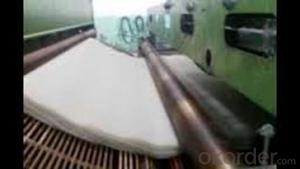Thermofusion of Geomembrane: A Revolutionary Technique in the World of Waterproofing Waterproofing has always been a touchstone in terms of lasting and strong civil engineering. One such process that has become popular recently is ‘thermofusion de geomembrana’ which means heat welding of geomembranes, and it has changed the way waterproofing is done. This article highlights how this method works and the reasons why it is different from other traditional ways.
The Art of Thermofusion
Thermofusion itself is an art, which calls for accurate performance and deep knowledge. It involves fusing together geomembranes – large flexible sheets made of synthetic materials used to waterproof or line objects. The sheets are heated to a certain temperature so they can soften and then be merged without any gaps between them into a one piece watertight partition. It does not involve glues or mechanical fasteners, which may fail after sometime.
The Heat of the Moment
For proper fusion to take place, the quantity of heat used in thermofusion should be well calibrated. If not enough heat is applied, then they will not bond properly; if there’s too much heat applied, however, they will either melt or bend out of shape. Experienced technicians closely monitor this process by making any necessary adjustments to temperatures until they succeed in achieving perfect bonding .It is these minute details that make thermofusion such a reliable technique.
A Seamless Approach
One thing that makes thermofusion stand out among other techniques is its ability to form seamless unions between different layers of geomembranes . Particularly in large-scale projects where leakage could lead to structural damage or environmental pollution .The continuity provided by thermofusion offers an aesthetic continuous barrier that effectively inhibits water infiltration.
The Environmental Edge
Performance alone does not define thermo fusion; it also focuses on sustainability. The approach reduces environmental harm during waterproofing projects by eliminating the need for glues. Exposure to harmful chemicals may occur in adhesives, which when not properly disposed of, can seep into the soil and water systems. On the other hand, thermofusion simply requires heat and the inherent qualities of geomembranes rendering it more environmentally friendly.
The Human Touch
The process is highly technical but also very human. For instance, apart from being able to handle heated membranes technicians need to possess a good eye for detail and physical dexterity. In addition to technical know-how, this entails dealing with practicalities such as understanding materials and processes. This human aspect ensures that thermofusion works are always of high quality and uniformity.
Applications Beyond Boundaries
Thermofusion is versatile in that it can be used in many different projects across various fields. Whether it is landfills or reservoirs or tunnels or canals, this method functions well in numerous areas requiring water tightness .In turn ,engineers use it as an adaptable recourse over time whenever they need durable waterproofing solutions.
The Future of Waterproofing
In coming years, thermofusion de geomembrana will become the industry standard for waterproofing.\nThe technique’s applicability in terms of performance together with its adaptability towards future changes have made it grow fast within the industry. Even so, there still remains hope for a construction industry that would be greener in terms of using more reliable forms of construction practices and environmental-friendly measures once more projects start embracing thermofusion
In Conclusion
Considering the above, I believe that Thermofusion de geomembrana is not just a technique but a reflection on human inventiveness and a way of finding more sustainable approaches to construction today. In our search for new ideas and technologies, thermofusion is a symbol of how far we can go if craftsmanship meets technology. This ground breaking approach has a promising future and I am personally eager to see what it holds as we move forward.







